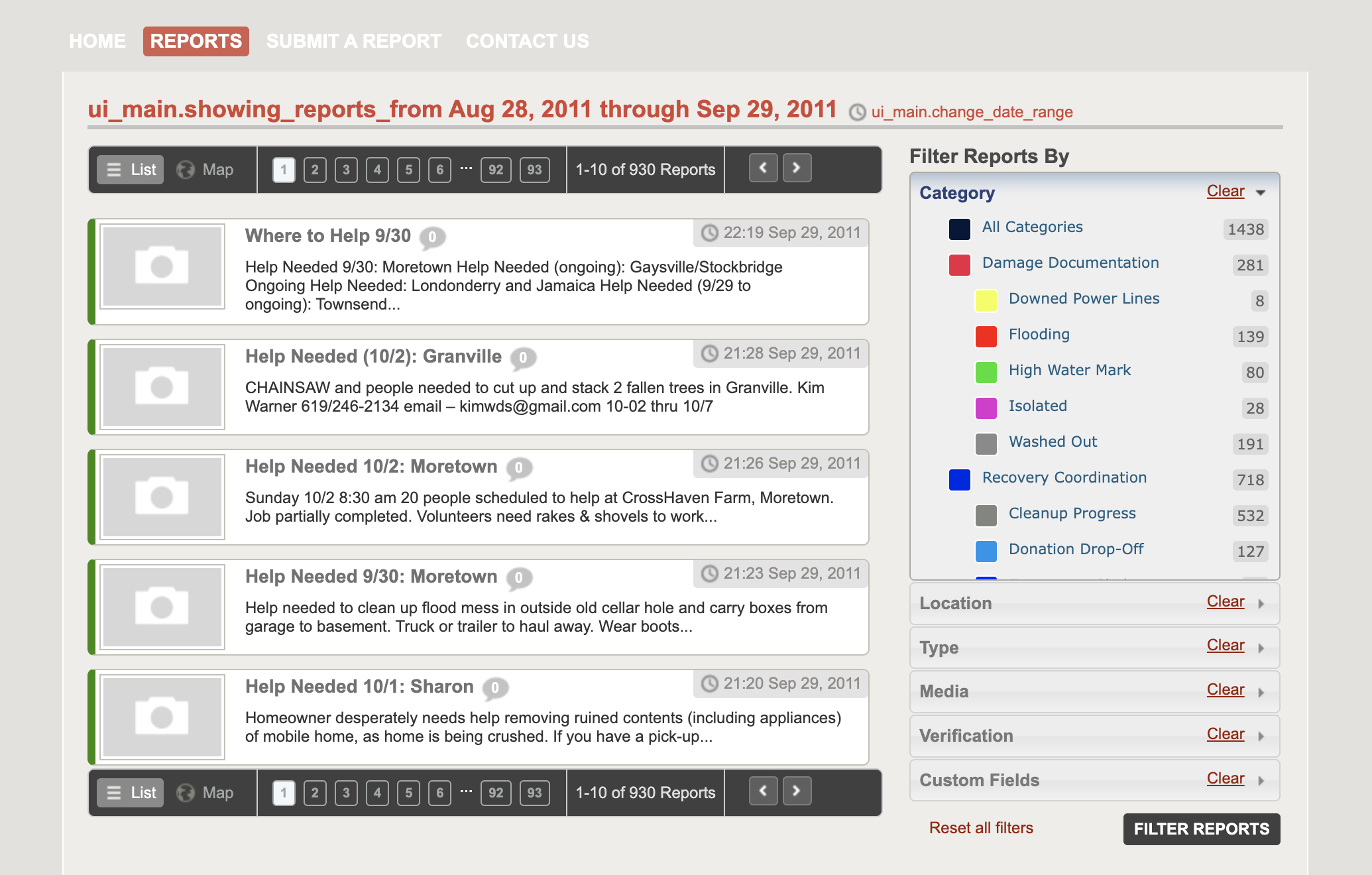Now that the floodwaters have receded, it’s really important to document the extent of the water before the traces change. Emergency management agencies still have their hands full, but they’ve recommended we collect geolocated photos of high water marks around the state - these help with mapping the effects and preparing for the future. If you’re in a position to do so, we’d be psyched if you’d help out by:
1.) Taking photos of any high water positions around you (sides of buildings, washouts, etc.), then entering them with location info in the map below or here: Submit a Report to the Crowdmap
2.) Downloading the free Ushahidi App on your Android or iPhone and recording high water marks live from the field. Once it’s installed,
- Add your info,
- Click on “Add Deployment”,
- Then enter this crowdmap address: “vtirene.crowdmap.com”
and you’re set to enter info from the field using your smartphone’s GPS and camera. Reports will go directly to the crowdmap.
3.) If you’ve got a high-resolution GPS unit like a Trimble or Garmin, collect position info on any photos you take and add them to the map using either of the above methods (They both accept latitude/longitude coordinates). Here’s a guide to getting the greatest accuracy while mapping high water marks this way
With any of the above methods, be sure to check the “High Water Mark” box to clarify what type of info you’re entering.
Be sure to defer to first responders and residents at all times. Some towns have restricted access, and it’s important to respect that as they dig out. Also, keep an eye on the weather at all times and stay out of danger if more rain is threatening. But overall, thank you all for the work you’ve been doing; we’re lucky to have such a great community in Vermont.

Cover photo of Brattleboro, VT by Kevin O’Connor